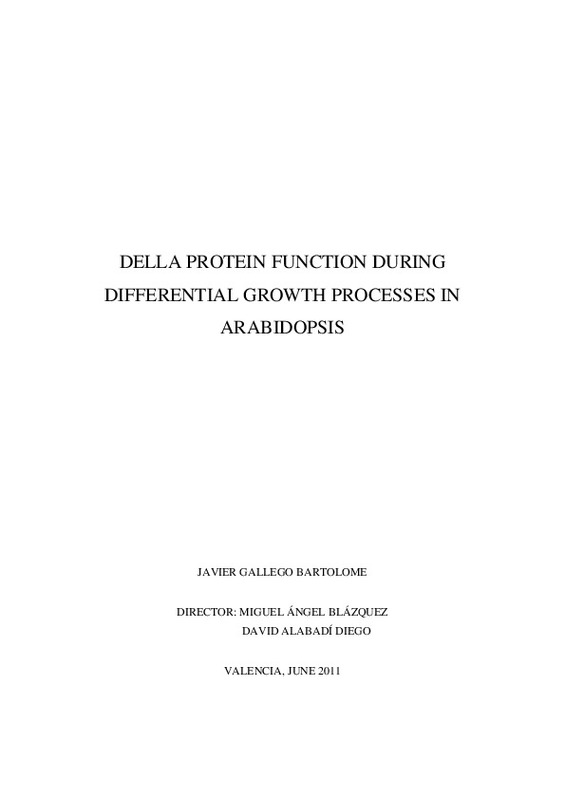- RiuNet repositorio UPV
- :
- Investigación
- :
- Tesis doctorales
- :
- Ver ítem
JavaScript is disabled for your browser. Some features of this site may not work without it.
Buscar en RiuNet
Listar
Mi cuenta
Estadísticas
Ayuda RiuNet
Admin. UPV
Della protein function during differential growth processes in arabidopsis
Mostrar el registro completo del ítem
Gallego Bartolomé, J. (2011). Della protein function during differential growth processes in arabidopsis [Tesis doctoral]. Universitat Politècnica de València. https://doi.org/10.4995/Thesis/10251/11403
Por favor, use este identificador para citar o enlazar este ítem: http://hdl.handle.net/10251/11403
Ficheros en el ítem
Metadatos del ítem
| Título: | Della protein function during differential growth processes in arabidopsis | |||
| Autor: | ||||
| Director(es): | ||||
| Entidad UPV: |
|
|||
| Fecha acto/lectura: |
|
|||
| Resumen: |
The plant hormones gibberellins (GAs) regulate multiple processes of plant development. Most of this regulation occurs at the transcriptional level, through the activity of the DELLAs, which are nuclear-localized proteins ...[+]
|
|||
| Palabras clave: |
|
|||
| Derechos de uso: | Reserva de todos los derechos | |||
| DOI: |
|
|||
| Editorial: |
|
|||
| Tipo: |
|
recommendations
Este ítem aparece en la(s) siguiente(s) colección(ones)
-
Tesis doctorales [5389]







![Text file [Text]](/themes/UPV/images/text.png)



